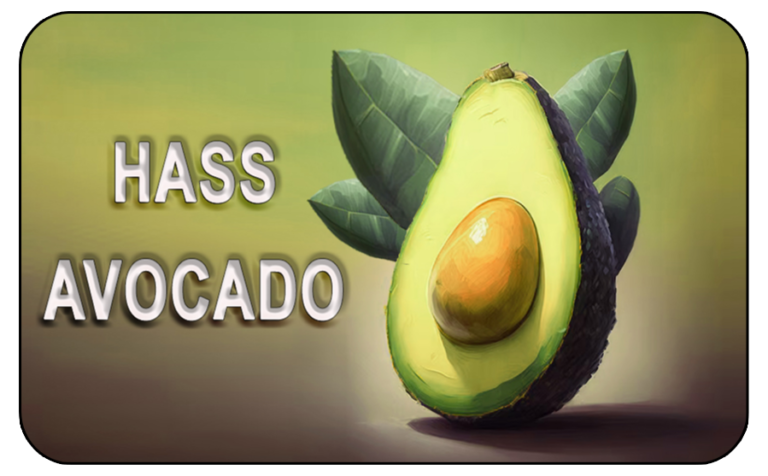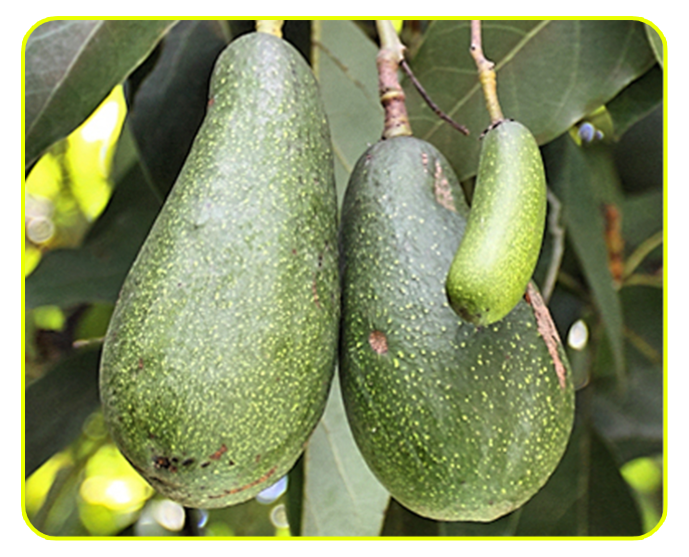
ARE YOU AN AVOCADO AFFECTIONADO?
As a young boy of about 8 or 9 years old and living in the duplex my mother rented was my introduction to avocados. There were two old avocado trees growing in the back yard. The fruit on these avocado trees was small, round, purple and prolific. The seeds were tiny (about the size of a marble). They looked nothing like the usual avocados at the market. They were delicious.
From this early age, avocados were my first choice of a edible fruit. During the season, my mother would prepare them in many different ways. The creamy and smooth texture of the frozen avocados, mixed with a small amount of chocolate syrup was our ice cream desert. Mashed with garlic, tomatoes and greens was our vegetable serving. Mixed with refried pinto beans, cheese and pumpkin would often be a substitute for meat.
Those two trees could sustain our family for the 3 or 4 months of harvest season and I never tired of the myriad of recipes my mother concocted. As an adult, I would pick bags full for her and my own family. I dreamed of having an avocado orchard after my retirement.
Fallbrook, a city in North San Diego county, calls itself the “avocado capital of the world”. It shares this distinction with Tancitaro, Michoacan, Mexico. Both cities hold annual Avocado Festivals. In truth, Michocan, Mex. is by far the largest avocado producing area in the world. How long they will continue to hold this title is uncertain. Land and water disputes and the illegal involvement of Mexican drug cartels is effecting their productivity.
Near Fallbrook, CA is the small community of DeLuz, this is where I purchased nearly 10 acres of undeveloped land on a handshake and small down payment. For seven years I lived in a small camping trailer while planting my orchard and building my home. The steep sloping land allowed for over 1000 avocado trees and several hundred sweet lime and cherimoya trees.
With my home completed and trees producing well and avocado prices high, the future seemed bright. President Clinton then signed the NAFTA agreement with Mexico with the implementation starting January 1, 1994. This put many California avocado growers out of business. High land, water and labor costs made it impossible to compete with Mexico. A Mexican Hass avocado that was purchased on the USA’s east coast, cost less than half of one grown and sold locally in Fallbrook CA.
The avocado farming successes with organic products had led me into a organic fertilizer business. My “Organa” farm product line of sea kelp, saponin (derived from desert yucca) and worm castings worked particularly well for citrus trees, avocados and sod (grass) farmers. No chemical fertilizers were necessary, all of the NPK requirements were met naturally.

I sold the farm! Moved to a avocado growing area in Chiang Mai, Thailand. Both Reed and Fuerte avocado varieties did well there but the Hass variety (which accounts for 95% of the worlds commercial sales) were not being planted. The long shelf life and the ability to be left on the tree longer makes the Hass variety more commercially viable.
World demand still exceeded production capabilities and many other countries with suitable climate and conditions were interested in developing avocado farming opportunities. After three years of experimenting in Chiang Mai with different growing methods, I found that there was just too much rain and root rot became a major problem.
My next attempt was in a drier area of Thailand called Isan. Near the border with Lao, the climate was suitable, but the land is mostly flat. Avocados do the best when planted on a hillside. The hilly area of the Bolaven Plateau in Champasak Province, Lao is home to high quality coffee plantations and a growing number of avocado growers.
I’m now in the process of growing a few varieties of avocados in the Kengmaihia area of Champasak Province, Lao. Not too far from the Bolaven Plateau. Initial results are encouraging and I’m waiting to determine which variety of avocado will be best to graft Hass cuttings too. Grafts could be producing fruit in as little as three years. Growing from seeds could take up to seven years.
The following tips below can help to guide you in selecting the best Hass avocado available:
I’ve been a commercial and backyard avocado grower for decades. I have used various growing methods, including soil amendments, organic and chemical fertilizers on my crops. Consequently, I’m able to recognize certain characteristics that enable me pick out the best avocados.
95% of the commercially grown avocados available world wide are of the Hass variety. For this reason, I’ll limit this selection process to this particular variety.
To anybody who has purchased an avocado only to find that it was inedible later, these suggestions are for you.
- Make sure that the stem has been clipped. Avocados that are picked (no stem) will not ripen evenly.
- Avocados that are less pear shaped and rounder indicate a lack of certain nutrients. Often times these will have thicker skins and much larger seeds.
- Diameter of stem can often indicate the size of the seed. An avocado with a small stem often has a small seed.
- Skin texture can be important. Rough and knobby skins are generally thicker. Pick smoother skinned ones.
- Color, blacker and thicker skins can hide the ripeness inside. Even color, if darker on ends will not ripen well.
- Skin shine and vivid green color can indicate an avocado that has grown protected from the sun and elements.
These tips could help in making a better avocado selection. A single avocado tree could have all of the different types
listed above.
Something you will probably never see are the occasional mutations that can grow on any Hass avocado tree.
Called “Cukes” (they actually look like a cucumber) they are seedless, thin skinned, with the texture of soft butter. Avocado affectionados such as myself have tried unsuccessfully for years to be able to replicate the conditions to produce them. Maybe someday!